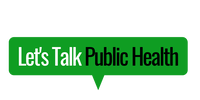The Let’s Talk Public Health #HealthComm Toolbox shares FREE resources and tools that public health students, professionals, agencies, associations, nonprofits, schools of public health, and other health-related service providers, organizations and brands can use for their public health communication and marketing.
Access tools and resources related to public health writing, digital and social media, data visualization, accessibility, health literacy, cultural and linguistic competence, usability, data and digital storytelling, edutainment, and more.
Access tools and resources related to public health writing, digital and social media, data visualization, accessibility, health literacy, cultural and linguistic competence, usability, data and digital storytelling, edutainment, and more.
Last updated: March 5, 2024
TABLE OF CONTENTS
Section 1: Health Communication Basics >>
B. Readability in Health Communication >>
3. Cultural and Linguistic Competence in Health Communication >>
4. Usability and User Experience for Health Communication >>
Section 3: Advocacy in Health Communication >> Section 4: Storytelling for Health Communication >>
Section 6: Best and Promising Practices for Health Communication >>
- Writing for Public Health >>
- Data Visualization for Health Communication >>
- Using Digital and Social Media for Health Communication >>
- Branding for Public Health >>
B. Readability in Health Communication >>
3. Cultural and Linguistic Competence in Health Communication >>
4. Usability and User Experience for Health Communication >>
Section 3: Advocacy in Health Communication >> Section 4: Storytelling for Health Communication >>
- Data Storytelling for Health Communication >>
- Digital Storytelling for Health Communication >>
- Entertainment Education for Health Communication >>
Section 6: Best and Promising Practices for Health Communication >>
|
SKILL-BUILDING
RESOURCES |
Looking to build your skills in any of these elements of public health communication and marketing, check out the free courses on the Public Health Foundation’s TRAIN Learning Network, the World Health Organization's OpenWHO, and massive open online course websites like Coursera, edX, and Udacity.
|
|
Highlights
Explore
Connect
|
© 2024 Let's Talk Public Health, LLC. All rights reserved. | View our Privacy policy | Terms of service | Disclaimer | Editorial policy.
